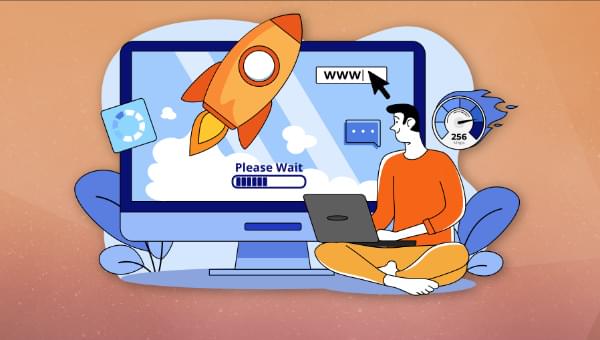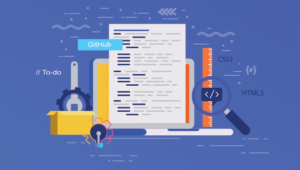Five Simple Ways to Boost a WooCommerce Site’s Performance

Key Takeaways
- Speed is crucial for WooCommerce sites; a faster loading time improves user experience, SEO, and sales. A one-second delay in loading time can reduce the conversion rate by 7%, so it’s crucial to optimize for speed.
- Factors that can slow down a WooCommerce site include using a slow hosting provider, lack of image optimization, too many plugins, not using a content delivery network (CDN), incompatible themes, a slow database, caching issues, out-of-date configurations, and an unactivated latest PHP version.
- To boost a WooCommerce site’s performance, select a good hosting provider, make use of HTTP/2, use caching, choose a fast WooCommerce theme, and optimize your CSS. Regular checks and updates are essential to maintain optimum speed and performance.
In this article, we’ll examine the pain points that slow down the speed of WooCommerce sites and provide you with some useful guidance on how to fix these issues.
WooCommerce is a free and popular ecommerce platform active on more than five million websites. It’s different from other platforms in that it doesn’t ask for a percentage of your store’s revenue.
Your WooCommerce website requires speed to make profits. The faster loading time helps in improving the user experience. A better user experience converts to improved SEO and sales for your business.
How fast Should Your WooCommerce Site Be?
The answer to this question is quite simple: as fast as possible. Website speed has such a remarkable impact on the WooCommerce site that all business owners should reduce their loading time as much as possible.
Speed is important for WooCommerce sites, as page loading time is the key ranking factor. One study found that a one-second delay in loading time reduces the conversion rate by 7%.
According to another study, one-second loads have five times more conversion rates than the site that loads in 10 seconds. So, if you want to get better results, your site needs to load within a second.
Quick site speed helps improve the user experience of the WooCommerce store. It leads to an increase in reputation and reliability which helps increase the conversion rate.
A quick website is more attentive to the visitors. A slow WooCommerce site leads to a loss of consumers who put their attention everywhere.
What Makes a WooCommerce Site Slow?
Let’s go through some of the primary reasons that slow down your WooCommerce site.
1. Use of a slow hosting provider
No matter how many optimizations you make, your site wont get any faster if it’s hosted on an inadequate server. It’s just like running a car with flat tires.
One of the major culprits that leads to a WooCommerce slow site is the hosting provider. Many companies provide cheap or free hosting.
Those hosting providers lack the bandwidth capacity to assist a huge number of site visitors or a WordPress plugin such as WooCommerece working at a large scale.
Web hosting isn’t a major concern early on in your online store. After some time, when your transactions and traffic begin to pick up, you need to pay attention and scale your WooCommerce site.
2. Lack of image optimization
Your ecommerce website tends to have plenty of product images, so these files need to be small and to load as fast as possible. It’s important to think about how those images can influence the backend of your site.
If you aren’t able to optimize your images for size and delivery, they bring your site to a crawl.
3. Too many plugins
It’s necessary to have some plugins for your WordPress ecommerce store. If there are too many plugins, it’s important to remember that they can clash with each other.
It leads to page crashing and other unnecessary errors that slow down the user’s experience on your site. It’s important to check that any plugins are fully compatible with both WordPress and WooCommewrce. Incompatible plugins slow down your website.
4. Not using a content delivery network
When a visitor lands at your website, the CDN represents the data retrieved from the cached content from the server nearest to their location. It leads to faster loading times.
If your site doesn’t have a CDN, the content of your site is delivered from the web host’s server rather than data centers — which may be a long way from where your users re located.
It leads to slow page loading times, specifically for visitors who try to access the website from a distance. Slow page loading times also lead to fewer SEO credentials and force visitors to leave your page. It also hurts the conversion rate.
5. Bad or incompatible themes
Selecting a theme for your WooCommerce site is not an easy-breezy thing. There are plenty of themes available in the market. Many themes insert too much code into pages to assist you in building a specific layout.
If the theme isn’t well coded and doesn’t match the standards of WordPress, it can significantly lead to a slow WooCommerce site. A low-quality theme contains plenty of scripts of CSS stylesheets that reduce the speed of your website.
6. Slow database
Your site’s content, user data, and settings are stored in your site’s database. Whenever a site visitor interacts with the website, the database is asked to assist in generating a web page requested by the user. The speed of the database is essential to the speed of your site. If it runs slowly, it takes more time for the requested page to be visible to the user. It can also cause a poor user experience.
Your WooCommerce database can be slow for various reasons. It may be due to an ineffective database design, an excessive amount of database queries, and badly optimized database queries.
7. Caching issues
You should consider caching as an essential measure to speed up your store. Caching your regularly accessed data is an essential component of sites with fast loading times.
This data is stored in the hard drive or server’s memory. It allows users for quick access to the data in the future.
If you have enabled caching, either through a plugin or as a part of the hosting service, it’s important to have WooCommerce-friendly caching in place.
8. Out-of-date configuration
Outdated software is one of the key reasons for security breaches. So it’s important to install the latest version. You have to ensure that no parts of your website are running on the older versions.
Sometimes they don’t work properly and lead to the slowdown of your website.
9. The latest PHP version is unactivated on your website
Both WooCommerce and WordPress make use of PHP (a server-side scripted language) to create effective content on your website. Older versions of PHP don’t provide you the fastest loading times for your website.
Sometimes, the older versions are not supported by WooCommerce and WordPress, which presents compatibility issues.
How to Boost a WooCommerce Site
Dealing with a slow WooCommerce website can be daunting. There are some easy techniques mentioned below to optimize the performance and make your WooCommerce site faster.
1. Select a good hosting provider
If you have a good hosting service, your site will be more likely to run quickly. First, you should consider how fast your web hosting is. Then, ask what kind of service this provider delivers, and if they’re secure.
Some of the strategies you need to look for are:
- Check the hosting uptime score frequently.
- Server-level caching that is configured for WooCommerce.
- Various data centers so that you can opt for the location based on where your important customers are.
- A content delivery network if you have international consumers.
- SSL certificate (if you want to secure your online store).
- Storage and bandwidth they provide for your products.
- Check the type of hosting they deliver. If you have multiple products with huge monthly traffic you need a dedicated server.
- Automatic backups.
- Ensure that your hosting provider provides HTTP/2.
To understand that last point, let’s take a look at the significance of HTTP/2.
2. Making use of HTTP/2
HTTP/2 helps increase the speed of your website. It does so by enabling the browsers to proceed with several requests over a single connection at once. This saves on bandwidth, leading to faster loading times.
Earlier, the browser had to return to the server to collect every single resource. Now it collects all the resources and transfers them simultaneously.
3. Use caching
Caching is highly recommended to speed up your WooCommerce store. Caching speeds up performance by reducing time-consuming procedures. It includes collecting all stored information or creating new copies for each visitor requesting content.
The best attributes you need to consider in a cache plugin are JS and CSS file optimization and cache preloading. It also includes Gzip compression, lazy load for images and videos, the possibility to defer JavaScript loading, and so on.
4. Choose a fast WooCommerce theme
To check if the theme is slowing down your WooCommerce site, you need to create a backup and switch it to a WooCommerce-recommended theme or default WordPress theme.
If there’s an issue with your theme, your site will load faster after the switch. If your site is still running slow, it’s because of the plugins you’ve installed.
We strongly recommend you choose a theme that’s lightweight and optimized for performance. The theme must have a clean codebase that focuses on speed more than aesthetics.
5. CSS optimization
Optimization of CSS boosts the speed of your WooCommerce site. This is possible with two methods:
- Optimize the delivery of CSS to remove render-blocking CSS on your website for faster loading.
- Eliminate unused CSS to decrease the size of the page and HTTP requests for better performance.
Final Thoughts
Your WooCommerce site requires speed to create profit. There are so many things that slow down your WooCommerce website. Fortunately, there are some great techniques out there to help you improve your WooCommerce site.
If you need a helping hand with optimizing your WooCommerce site and dealing with performance issues, there are various tools available online tool for both WooCommerce and WordPress that resolve lots of performance issues that lead to slowing down your store.
No matter how much time and money you invest in your WooCommerce site, there’s always something you need to fix or that you can do to improve your site’s performance. Good luck with your ongoing WooCommerce optimization!
Palash is a content writer at RabbitLoader. He writes creative articles on varied topics business, SaaS, marketing, technical issues and more. Apart from writing, he likes to read novels, plays and short stories, and also to listen to soft music.





